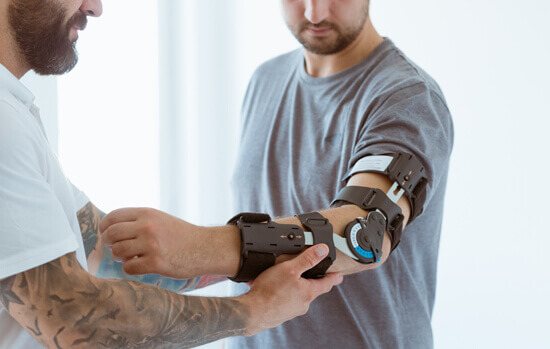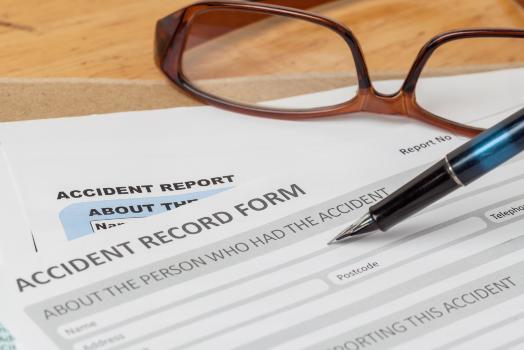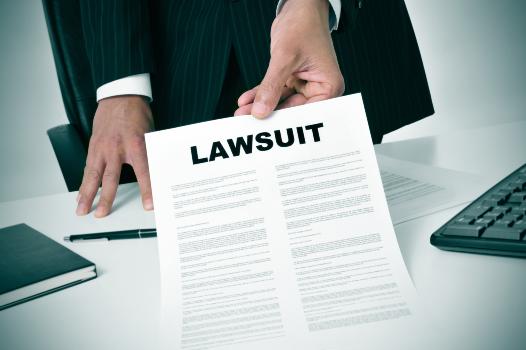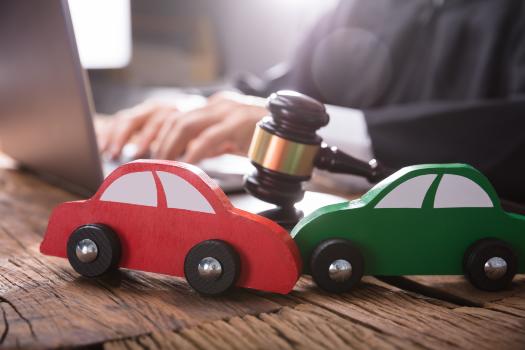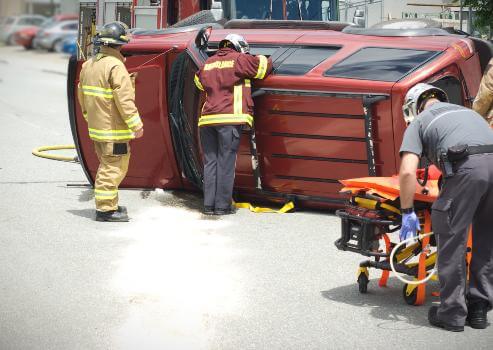Understanding No Fault Car Accidents in Alberta: A Guide for the Injured
Securing Legal Help in Alberta, Canada: Navigating a No Fault Car Accident Injury
Being involved in a no fault car accident can be a disorienting and overwhelming experience, especially in Alberta, where the rules and regulations surrounding such incidents can be complex. If you’ve been injured in a car accident that was not your fault, you may be left with a myriad of questions: What to do after a car accident that was not my fault? How is fault determined in a car accident? How to determine who’s at fault in a car accident? This guide is designed to provide clarity and guidance for those navigating the aftermath of a no fault car accident in Alberta.
Understanding the nuances of Alberta’s no fault car accident laws is crucial, not only for your peace of mind but also for securing the legal help you may need. With this in mind, we delve into the intricacies of these laws, shedding light on the process and what you can expect. We also discuss the importance of seeking professional legal advice from a qualified injury lawyer in Alberta, who can help you manoeuvre this often confusing and stressful situation. For more detailed information on the legal aspects of no fault car accidents in Alberta, you can visit the official Alberta government’s transportation website.
- Understanding No Fault Car Accidents in Alberta: A Guide for the Injured
- Alberta Guide: What to Do After a No-Fault Car Accident Injury
- Understanding Fault Determination in Alberta Car Accidents: A Guide for the Injured
- Injured in a No-Fault Car Accident in Alberta? Here’s What to Do!
- Alberta Guide: Determining Fault in a Car Accident When Injured
Understanding No Fault Car Accidents in Alberta: A Guide for the Injured
Securing Legal Help in Alberta, Canada: Navigating a No Fault Car Accident Injury
Understanding the complexities of a no fault car accident in Alberta can often be a daunting task, especially for those who have been injured. The legal landscape surrounding such incidents is intricate, and navigating it requires a strong grasp of the laws and regulations in place. The concept of ‘no fault’ might seem straightforward, but when it comes to determining who’s responsible for the accident and who should bear the costs, things can get complicated.
When you find yourself injured in a car accident that was not your fault, it’s natural to feel a sense of injustice. You may be left wondering, ‘What to do after a car accident that was not my fault?’ or ‘How is fault determined in a car accident?’ These are critical questions that demand clear, concise answers. In Alberta, the process of determining fault in a car accident involves a careful examination of the circumstances surrounding the incident. Evidence such as eyewitness testimonies, police reports, and damage to the vehicles are all crucial factors in this process.
Understanding ‘how to determine who’s at fault in a car accident’ is essential, but it’s only one part of the equation. If you’ve been injured in a car accident that was not your fault, your primary concern should be your recovery. Healing after a car accident can be a long and challenging journey. It’s important to remember that everyone heals at their own pace and that there’s no set ‘car accident healing time.’ For advice on how to heal after a car accident, consider seeking professional help.
Securing legal help in Alberta after a no fault car accident injury is crucial. An experienced injury lawyer can help guide you through the legal maze, ensuring you understand your rights and options. They can assist with everything from filing claims to negotiating with insurance companies, allowing you to focus on your recovery. Remember, when it comes to no fault car accidents, the law is on your side. With the right help, you can navigate this challenging situation and come out on the other side stronger and more resilient.
Alberta Guide: What to Do After a No-Fault Car Accident Injury
Your Next Steps in Alberta, Canada: What to Do after a Car Accident That Was Not My Fault
Experiencing a no-fault car accident in Alberta can be a disorientating and stressful experience, not least because of the immediate physical and emotional trauma, but also due to the subsequent legal and insurance-related complexities. If you’ve been injured in a car accident that was not your fault, it’s crucial to understand the steps you need to take to protect your rights and ensure your recovery.
One of the first things you may find yourself asking is, “What do I do after a car accident that was not my fault?” The answer to this question is multi-faceted and depends on the specifics of your situation. However, there are some general steps you can take to safeguard your interests. These include seeking immediate medical attention, documenting the accident scene, reporting the incident to your insurance company, and consulting with a qualified car accident lawyer.
Another common question is, “How is fault determined in a car accident?” In Alberta, the determination of fault in a car accident is typically made by the insurance companies involved, based on the evidence and circumstances surrounding the accident. The process can be complex and may involve an examination of police reports, witness statements, and any available video footage.
As someone who has been injured in a car accident that was not my fault, it’s essential to know how to navigate the process of determining fault. This is where the expertise of a dedicated car accident lawyer can be invaluable. They can guide you through the complexities of the legal system, helping you understand how to determine who’s at fault in a car accident and what steps to take to ensure your recovery.
In conclusion, dealing with a no-fault car accident in Alberta can be a challenging ordeal. However, by taking the right steps and seeking professional legal advice, you can protect your rights, ensure your recovery, and navigate the aftermath of the accident with confidence.
Understanding Fault Determination in Alberta Car Accidents: A Guide for the Injured
Deciphering How Fault is Determined in Alberta, Canada Car Accidents: Your Next Steps
Understanding fault determination in Alberta car accidents is a critical step for any injured party seeking justice and compensation. This process can be complex and overwhelming, especially if you’re grappling with the aftermath of a no fault car accident. However, knowing what to do after a car accident that was not your fault is essential in protecting your rights and interests.
Fault determination in Alberta car accidents involves a thorough investigation and analysis of the circumstances surrounding the incident. The process considers various factors such as the drivers’ actions, the condition of the vehicles, and the road and weather conditions at the time of the accident. It’s crucial to understand how fault is determined in a car accident to ensure a fair and accurate assessment of liability.
Being injured in a car accident that was not your fault can be a traumatic and stressful experience. You may be dealing with physical injuries, emotional distress, and financial hardship. It’s crucial to take the right steps after the accident to protect your rights and secure the compensation you deserve. This includes seeking medical attention, documenting the incident, and consulting with an experienced injury lawyer.
Knowing how to determine who’s at fault in a car accident can be a complex task, especially without legal expertise. The process involves interpreting traffic laws, analyzing evidence from the accident scene, and sometimes, reconstructing the accident. Therefore, it’s highly recommended to seek legal advice to navigate this process effectively.
Understanding the potential compensation you could receive is also an important aspect. You may be wondering how much compensation you can get from a car accident. The amount of compensation depends on various factors, including the severity of your injuries, the impact on your quality of life, and the degree of negligence of the other party. An experienced injury lawyer can help you understand your rights and guide you through the process of securing the compensation you deserve.
In conclusion, understanding fault determination in Alberta car accidents is critical for anyone injured in such incidents. It’s crucial to know what to do after a car accident that was not your fault and how to determine who’s at fault in a car accident. Seeking legal advice can be invaluable in navigating this complex process and securing the compensation you deserve.
Injured in a No-Fault Car Accident in Alberta? Here’s What to Do!
Securing Legal Help in Alberta, Canada: When You’re Injured in a Car Accident That Was Not My Fault
Being involved in a no-fault car accident can be a daunting and confusing experience, especially when you’re the one who has been injured. In Alberta, the aftermath of such an accident can leave you with numerous questions. You may be wondering, “What to do after a car accident that was not my fault?” or “How is fault determined in a car accident?” These are valid concerns, and it’s essential to know how to navigate the situation.
Firstly, it’s crucial to understand that in a no-fault car accident, the term ‘no-fault’ doesn’t mean that no one is to blame. Instead, it refers to a type of insurance system where each driver’s insurance company pays for their client’s damages, regardless of who caused the accident. This system aims to expedite the claims process and limit the number of lawsuits resulting from car accidents.
When you’re injured in a car accident that was not my fault, the first step is to seek immediate medical attention. Your health and safety should always be your top priority. Even if the injuries appear minor, it’s essential to get checked out by a medical professional. Some injuries may not show symptoms immediately, and a medical record can be vital evidence if you decide to pursue a personal injury claim.
Next, it’s important to gather as much evidence as you can at the accident scene. This evidence can be crucial in helping to determine who’s at fault in a car accident. Take photos of the accident scene, your injuries, and any damage to your vehicle. If there were any witnesses, try to get their contact information as well.
After taking these initial steps, it’s advisable to consult with a personal injury lawyer. A lawyer can guide you through the complex legal process, ensure your rights are protected, and help you secure the compensation you deserve. They can also answer your questions about what to do in a car accident and how fault is determined.
In Alberta, securing legal help after a no-fault car accident is a prudent step. An experienced lawyer can help you navigate the complexities of the no-fault insurance system, deal with insurance companies, and ensure you receive fair compensation for your injuries and damages. Remember, it’s not just about getting through the aftermath of the accident; it’s about ensuring your future wellbeing and financial stability.
In conclusion, if you’ve been injured in a no-fault car accident in Alberta, it’s essential to know what steps to take. From seeking immediate medical attention to consulting with a personal injury lawyer, these actions can significantly impact your ability to secure the compensation you deserve. Remember, you don’t have to navigate this challenging situation alone. Legal help is available, and it’s your right to seek it.
Alberta Guide: Determining Fault in a Car Accident When Injured
Alberta, Canada: Navigating How to Determine Who’s at Fault in a Car Accident When Injured
Experiencing a car accident can be a traumatic and confusing event, particularly when injuries are involved. In Alberta, understanding who is at fault in a car accident when injured can be complex, but it’s crucial for your potential compensation. It’s essential to know what to do after a car accident that was not your fault, especially when you’re injured and need to focus on your recovery.
In Alberta, the process of determining fault in a car accident is often based on the Traffic Safety Act and the insurance companies’ analysis. However, it’s not always clear cut, and you might find yourself questioning, “how is fault determined in a car accident?” The answer lies in the details of the incident, the evidence available, and the interpretation of the law.
Being injured in a car accident that was not your fault can leave you with a myriad of concerns, from medical bills to loss of income. This is where understanding how to determine who’s at fault in a car accident becomes vital. The fault determination will significantly impact the compensation you might receive for your injuries and damages.
It’s important to remember that Alberta operates under a no-fault car accident system, meaning that regardless of who caused the accident, each party’s insurance company will cover their own insured’s injuries and damages. However, this doesn’t mean you can’t pursue further compensation if the accident wasn’t your fault.
When you’re not at fault, you have the right to seek additional compensation from the at-fault party’s insurance company or even consider suing for a car accident injury. This is where an experienced injury lawyer can be invaluable, guiding you through the process and advocating for your best interests.
In conclusion, determining fault in a car accident when injured in Alberta can be a complex process, but it’s a crucial step in securing the compensation you deserve. Whether you’re dealing with a no fault car accident or need advice on what to do after a car accident that was not your fault, it’s essential to consult with a professional who can help you navigate the process and ensure your rights are protected.
*The laws pertaining to automotive injuries are complex and are contsantly evolving. The information on this website was not written by legal professionals and should not be considered legal advise. Please contact a professional personal injury lawyer serving Alberta for the most up to date and accurate information.


